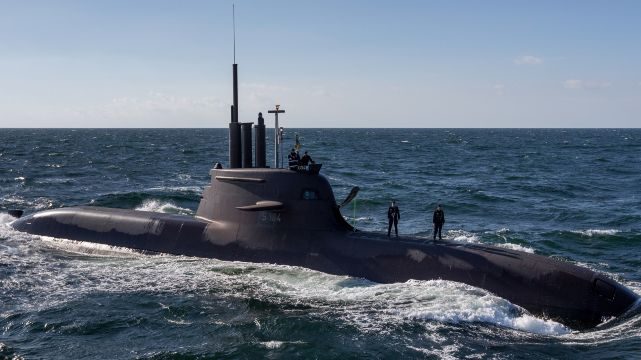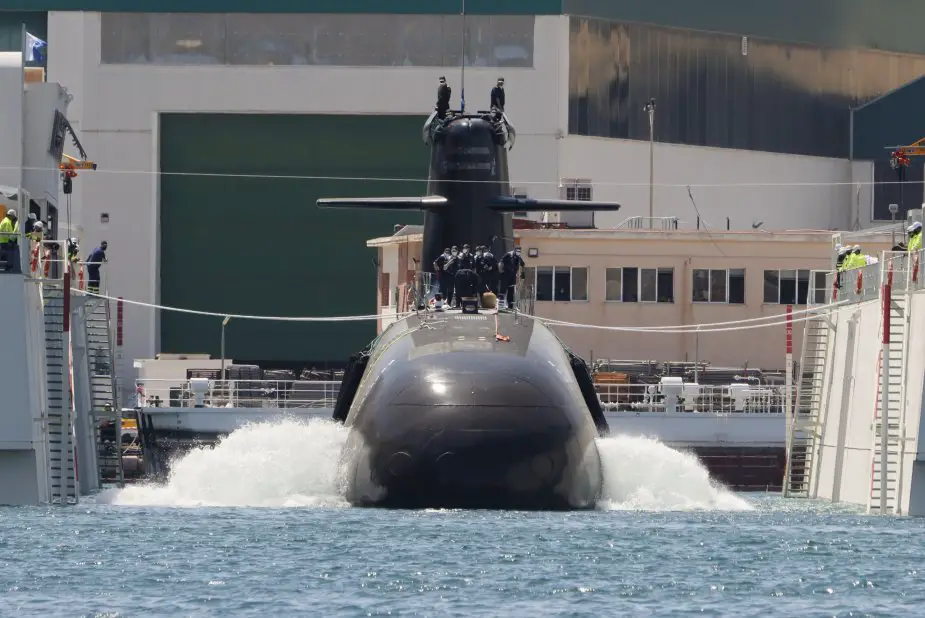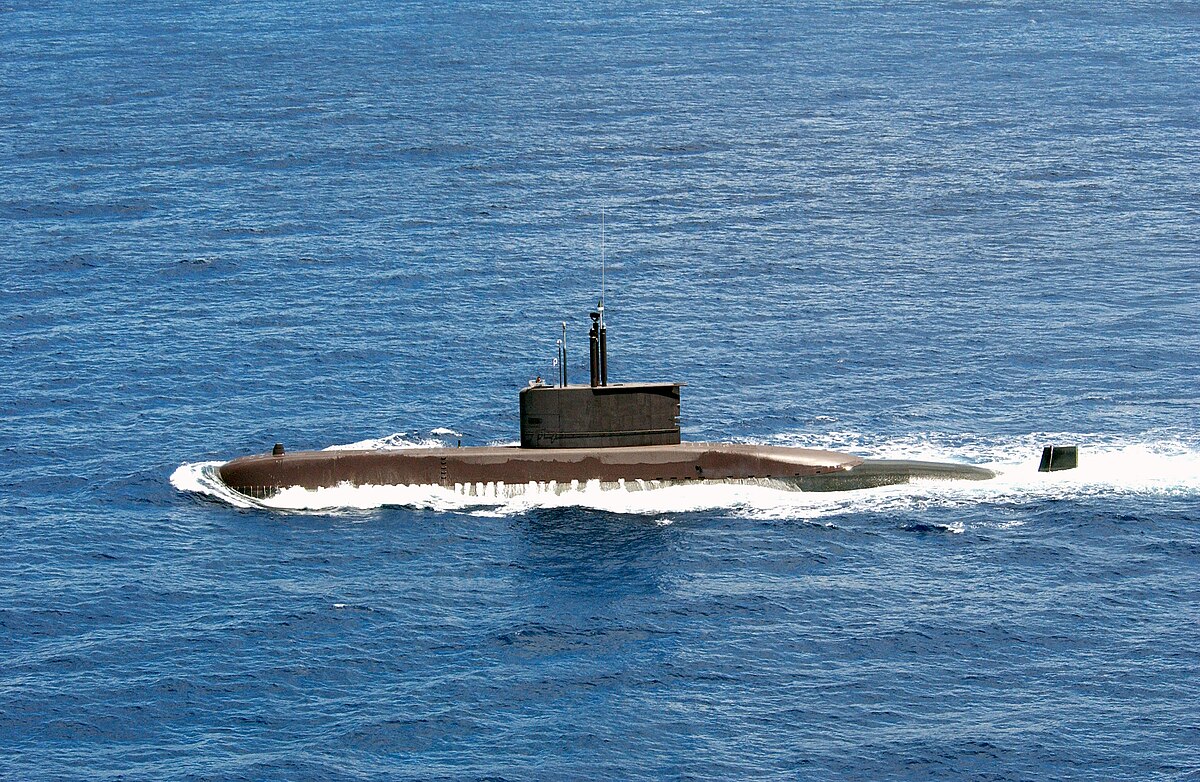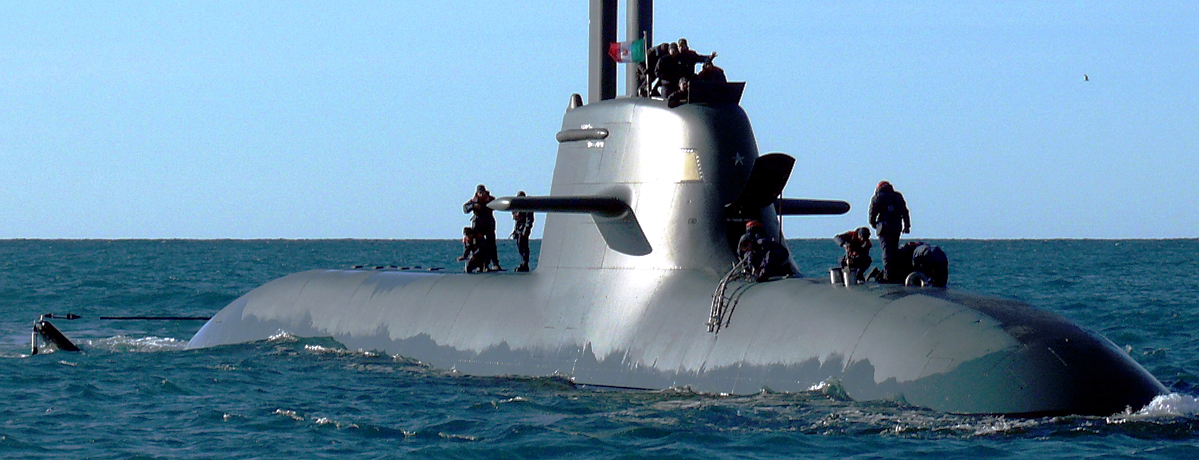High-Stakes Submarine Bidding War Escalates as Fincantieri-TKMS Pitch U212 NFS to the Philippine Navy
The joint proposal from the two European defence giants centres around a variant of the U212 NFS (Near Future Submarine), a state-of-the-art diesel-electric platform currently being constructed by Fincantieri for the Italian Navy, and now positioned as a key contender to bolster Manila’s undersea warfare capabilities.
(DEFENCE SECURITY ASIA) — In a bold move to capture a strategic foothold in Southeast Asia’s defence market, Italian naval powerhouse Fincantieri and German submarine specialist Thyssenkrupp Marine Systems (TKMS) have inked an industrial cooperation agreement aimed at supplying the Philippine Navy with next-generation submarines—escalating an already heated contest among global shipbuilders for one of Asia’s most closely watched defence procurements.
The joint proposal from the two European defence giants centres around a variant of the U212 NFS (Near Future Submarine), a state-of-the-art diesel-electric platform currently being constructed by Fincantieri for the Italian Navy, and now positioned as a key contender to bolster Manila’s undersea warfare capabilities.
This partnership goes beyond the transfer of hardware, as it also encompasses plans to develop local shipbuilding infrastructure and significantly enhance the Philippine Navy’s long-term operational readiness and maritime deterrence.
“Building on our successful cooperation within the Italian submarine program, this industrial cooperation agreement provides an excellent foundation for further joint projects in the underwater domain,” said Oliver Burkhard, CEO of TKMS.
The U212 NFS is a next-generation evolution of the highly regarded Type 212A class—one of the most advanced non-nuclear submarines in service today—and marks a decisive shift in Italy’s sovereign defence strategy.
The Type 212A, initially co-developed in the late 1990s by Germany’s HDW (now under TKMS) and Italy, entered operational service in the early 2000s and set new standards in stealth, endurance, and survivability for conventional submarines.
While Germany and Norway have joined forces to develop the newer Type 212CD (Common Design), Italy has charted its own path through the U212 NFS, optimised for Mediterranean security scenarios and broader strategic independence.

The U212 NFS retains the revolutionary Air-Independent Propulsion (AIP) system based on hydrogen fuel cells, enabling the submarine to operate submerged for extended durations—often weeks—without needing to surface, giving it a critical edge in contested waters.
Future iterations of the class are anticipated to feature next-generation lithium-ion battery systems, which will further extend submerged endurance while enhancing energy efficiency and acoustic discretion.
The submarine is outfitted with a highly integrated combat management system, sophisticated sonar arrays, and next-gen periscopes, all supplied by Italian defence technology leader Leonardo, reinforcing Rome’s intent to anchor the platform in domestic innovation.
A fully digital command, control, and navigation suite enables interoperability with NATO assets, making the U212 NFS not just a tactical submarine but a strategic instrument of coalition warfare.
Its low acoustic signature is further enhanced by an optimised hull form and advanced anechoic coatings, designed to thwart hostile sonar detection in high-threat littoral and deep-sea environments.
The U212 NFS carries the Black Shark Advanced (BSA) heavyweight torpedo, one of the most lethal weapons in its class, designed to neutralise both surface combatants and enemy submarines with high accuracy.

It is also capable of executing mine-laying missions and, in future upgrades, may be configured to launch land-attack cruise missiles, transforming it into a deep-strike platform with both strategic and tactical value.
But Fincantieri and TKMS are not alone in pursuing the Philippine submarine programme.
Spain’s state-owned Navantia has formally submitted a competing offer, proposing the sale of two S-80 Isaac Peral-class submarines—a deal estimated to be worth US$1.7 billion (RM7.65 billion).
The S-80 class is already in active service with the Spanish Navy, which currently operates four units, and is designed for extended blue-water operations and multi-domain missions.
Navantia’s offer is comprehensive, including not just the submarines themselves but the construction of a new submarine base complete with logistical and maintenance facilities in Ormoc City, a strategically located site in Leyte.
According to Guillermo Zamarippa, Navantia’s Commercial Manager, the proposal also includes technology transfer, full-spectrum training, and long-term sustainment, aiming to create a truly sovereign Philippine submarine capability.

“Navantia is offering a revolutionary submarine solution tailored to the Philippine Navy’s needs, with full interoperability, training, and operational support,” Zamarippa stated.
The S-80 Isaac Peral-class measures 81 metres in length and is capable of conducting land-attack missions, ISR (intelligence, surveillance, reconnaissance) operations, and both anti-surface and anti-submarine warfare.
Designed for long-endurance missions, the S-80 is equipped with its own Air-Independent Propulsion (AIP) system, allowing up to three weeks of continuous submerged operation, ideal for patrols in the West Philippine Sea.
Not to be outdone, France’s Naval Group is actively marketing its Scorpène-class diesel-electric submarines—the same platform already operated by regional naval powers such as Malaysia, Brazil, Chile, and India—to the Philippine Navy.
In 2022, Naval Group opened an office in Manila, reinforcing its commitment to establishing long-term industrial and logistical partnerships in the Philippines.
Since 2020, Manila has signalled strong interest in acquiring two Scorpène-class submarines, and according to the French firm, “intensive discussions” with Philippine defence officials are ongoing.

In a now-archived 2020 tweet, then-Foreign Secretary Teddy Locsin confirmed the acquisition plan: “We’re getting two French submarines along with the full training over years of several rotations of crew.”
Philippine media outlet Rappler reported in 2022 that France had offered two Scorpène-class submarines in exchange for permission to conduct seabed research in Philippine maritime territory—an offer reflecting France’s interest in both commercial defence ties and regional maritime access.
According to the report, the proposal included construction of two NATO-standard diesel-electric submarines, with full compliance to allied design and combat integration standards.
Another major player in the bidding war is South Korea’s Hanwha Ocean, formerly known as DSME, which has pitched its Jang Bogo-III class submarine to the Philippine Navy as part of a broader defence diplomacy strategy.
The Jang Bogo-III is the latest iteration of Seoul’s submarine programme, stretching 77 metres in length and equipped with modern propulsion systems and lithium-ion batteries to reduce acoustic signatures and improve underwater endurance.
The submarine supports a crew complement of 41 personnel, is capable of reaching 21 knots, and comes armed with six torpedo tubes capable of launching torpedoes as well as cruise missiles.

Hanwha Ocean’s proposal includes a full-scale support ecosystem comprising crew training, technology transfer, simulators, logistics support, and maintenance facilities, with flexibility for local basing at Subic Bay or a Philippine Navy site of choice.
To further sweeten the offer, the South Korean firm is proposing a seven-year financing package with competitive interest rates, aligning with Manila’s defence modernisation budget constraints.
With strategic stakes running high and geopolitical tensions mounting in the Indo-Pacific, the Philippines now finds itself at the epicentre of a multi-billion-dollar submarine procurement battle—one that will not only define the future of its naval warfare capabilities but also reshape the regional balance of maritime power for generations to come.
— DEFENCE SECURITY ASIA


